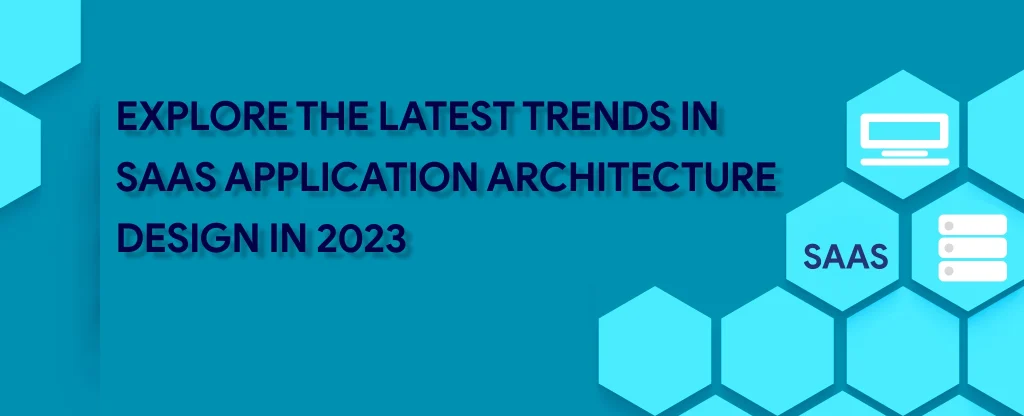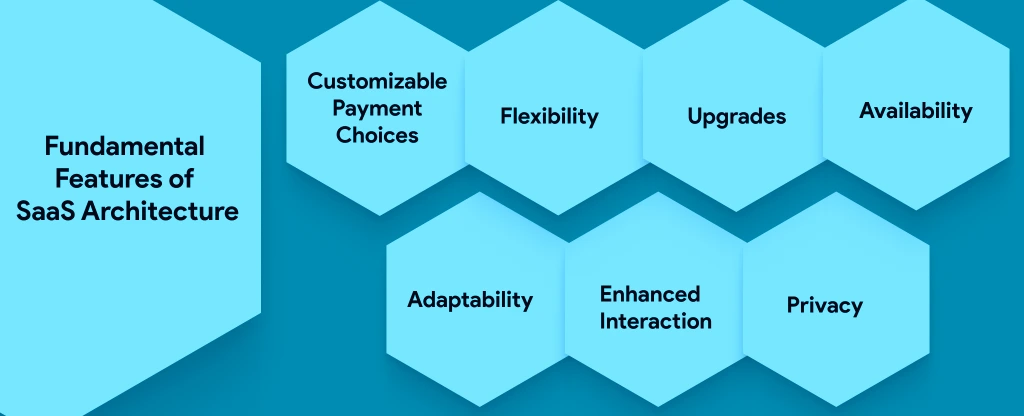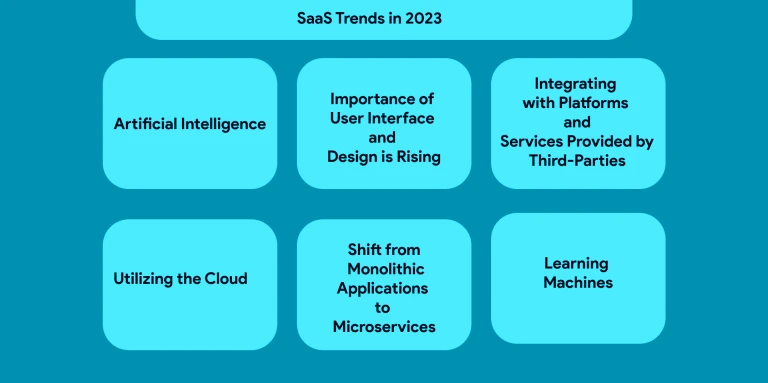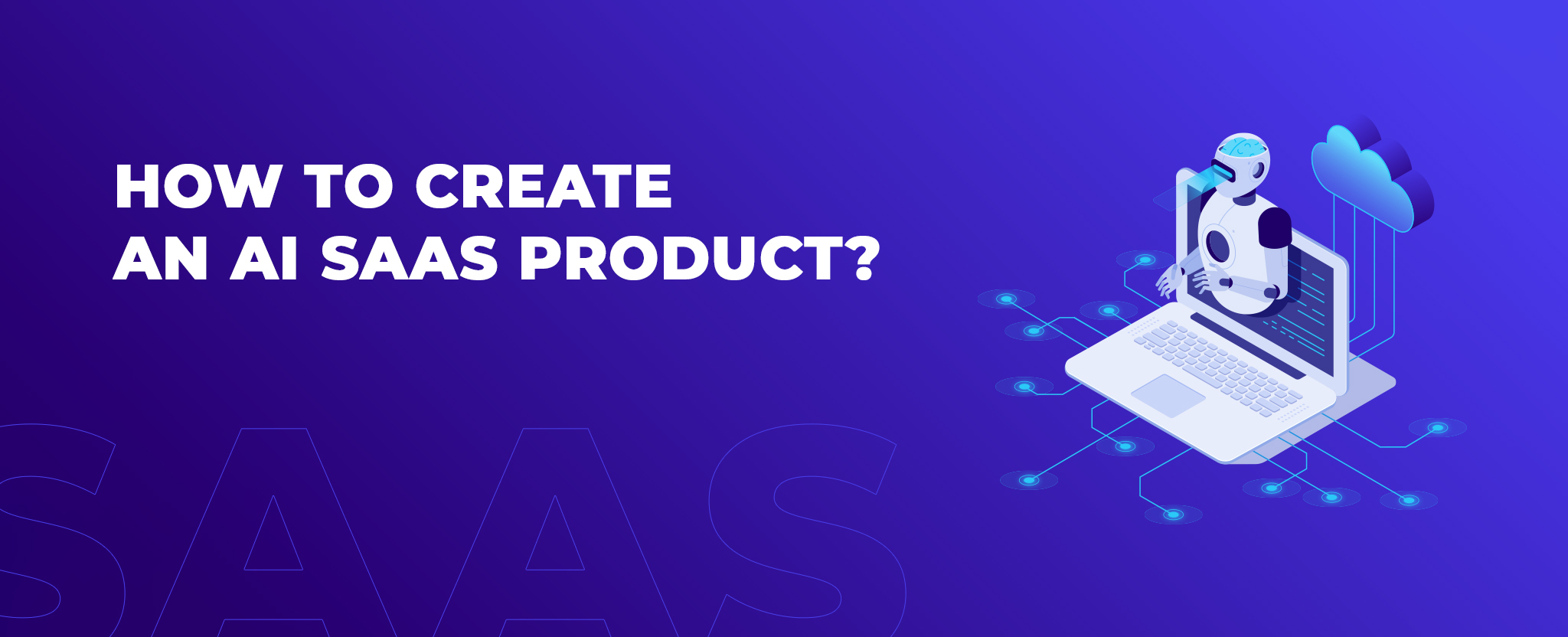Explore the Latest Trends in SaaS Application Architecture Design in 2024
28 Jun 23 


You will be amazed to realize that the SaaS application architecture and the software are advancing in a whirlwind, with the statistics ranging from 9.8 percent in 2022 to 11.8% in 2023. With these progressing trends in SaaS Application Architecture Design, mobile app development companies anticipate a significant market surge. Therefore, you must be competitive in that! SaaS Application Architecture Design
To guarantee that your firm is as effective as possible, you, as a business owner, must keep up with the most recent trends. When it comes to creating application software, this is particularly relevant. All in all, your rivals will be utilizing the most recent tools if you aren’t.
The latest trends in SaaS application architecture design are explored in this blog. At the end of this blog, you’ll know why it’s essential to be conscious of these patterns and how employing a cutting-edge SaaS application architecture design may help your company succeed in the digital era.
What is SaaS Architecture?
The software delivery strategy known as “Software as a Service,” or “SaaS,” enables consumers to use cloud applications via the Internet. This implies you don’t have to install it on a device or purchase a license. It entails drawing out a design plan for the software’s functionality and every layer and part comprising the whole program.
Fundamental Features of SaaS Architecture
While we examine our key software-as-a-service trends in 2023, it’s critical to understand what constitutes SaaS Application Architecture Design as a functional business strategy and a technological breakthrough.

Customizable Payment Choices
Companies can save on the cost of buying hardware and software. Instead, clients can choose from several pricing models. In the current competitive setting, adaptability in payment scenarios, whereby customers pay for the resource consumption they require. For example, it is appealing to many organizations.
Flexibility
Because cloud-based SaaS is naturally scalable, businesses can quickly grow. In addition, companies have a degree of discretion over the attributes and alternatives they desire.
Upgrades
SaaS Application Architecture Design providers take care of the required software upgrades and gradually create new features. This helps saving organizations time in this specific area of operation.
With newer technologies evolving, businesses now integrate tools to monitor applications in real-time, enhancing their operational efficiencies. This ensures not just timely updates but also optimal performance adjustments as needed.
Availability
SaaS Application Architecture Design allow businesses to use apps from any place and digital gadgets, especially useful for smartphones and tablets. It also touts user-friendliness and simplicity of usage.
Adaptability
SaaS Application Architecture Design provide a seemingly endless degree of versatility, convenience, and understanding. This is due to businesses that employ such tools or platforms will grow far more equipped to adjust to ongoing change or challenges.
Enhanced Interaction
Interaction among groups and divisions is made more accessible by SaaS innovations. This is because they enable shared files while also providing a distinctly easier reading experience.
Privacy
Compared to many centralized, in-house systems, numerous SaaS models are renowned for having enterprise-level privacy, which takes a more comprehensive approach. To mitigate possible network breakdowns, cloud SaaS already has disaster recovery procedures in place.
This indicates that irrespective of an invasion of privacy or system malfunction, your company’s data remains accessible and safe. This new, cutting-edge sector can only grow as companies depend on advanced data discovery tools and technologies to boost their capacity and effectiveness. Additionally, fresh software-as-a-service trends keep evolving.
SaaS Trends in 2023
After examining the essential traits of software-as-a-service advancements, it’s time to explore the most critical SaaS trends in 2023. These SaaS trends for 2023 will influence the market as the new year dawns, from the use of artificial intelligence to improved mobile optimization and beyond.

Artificial Intelligence
The independent, self-educational SaaS is the first of our most important developments. Artificial intelligence (AI) is now ingrained in our civilization. As a result, our choice of the top three business intelligence trends in 2023 included AI. This is anticipated to impact the upcoming year significantly. Artificial intelligence technology is quickly assuming a common position in the SaaS sector.
Autonomous technologies for organizations across industries enable the potential to increase service, goods, or content personalization. This is at the same time getting more thorough, fueled by data awareness of the demands of consumers. Businesses may use AI to become more sophisticated and productive while using fewer facilities. Thanks to the ideal storm of greater return for lower input.
Importance of User Interface and Design is Rising
The emphasis on mobile compatibility in software development is growing. SaaS Application Architecture Design must be created with these gadgets in mind. This is because so many people now access the web via phones and tablets. This calls for developing user-friendly apps on mobile platforms and adaptable to various screen sizes.
This can be achieved using the best UI/UX design process. The launch of Google’s Material Design was a significant development. Finally, a beautiful and simple user interface may be made using the design language’s rules. Thus, we see more SaaS products that adhere to these principles and provide an outstanding user experience across all platforms.
Integrating with Platforms and Services Provided by Third-Parties
Coupling SaaS products with third-party platforms and solutions is a further development we’re observing. Users may use this to obtain all the required functions and details in a single location. Financial software like QuickBooks integrates with a SaaS customer relationship management (CRM) system.
The demand for improved data analysis and decision-making is driving this development. SaaS-based applications may gather additional information and give consumers more understanding by interacting with different platforms.
Utilizing the Cloud
The transition to cloud-based services is one of the main developments in the SaaS platform. Apps housed on a distant server and used online are known as cloud-based apps. Increasing numbers of SaaS companies are switching to cloud computing these days. Why?
Conventional in-house apps are different from the scalability and dependability of cloud-based applications. In addition, maintenance is inexpensive and straightforward. Therefore, the fact that most new SaaS apps are being created for cloud computing is unsurprising.
Shift from Monolithic Applications to Microservices
A new architectural style that is gaining traction among software providers is microservices. A micro-SaaS approach divides a program into tiny, distinct features that may be created, implemented, and expanded separately.
Companies benefit from a targeted SaaS Application Architecture Design, such as increased adaptability, flexibility, and less intricacy. This strategy also simplifies adding new capabilities without affecting the remainder of the program. The shift to micro-SaaS businesses will undoubtedly alter how we interact with technology.
Learning Machines
A subtype of AI called machine learning (ML) is used in SaaS. This streamlines the reactivity in client service reports and apps, such as AI-powered chat services with live chatbots. Additionally, it will simplify SaaS onboarding.
Finally, due to the independent operating paradigm that ML is founded on, future developments will enable technology and services. This will that allow enterprises to automate large portions of internal processes aside from interaction with clients or experience alone.
Summing Up
A contemporary SaaS application’s architectural design is essential for companies aiming to stay ahead of the curve. Therefore, it is impossible to overestimate the advantages of implementing the most recent trends mentioned above.
Flexibility, privacy, and efficiency are all improved, which boosts effectiveness, lowers costs, and boosts performance. You can connect with a reputable SaaS development business that boasts technological know-how and appropriate knowledge to achieve success. Keeping up with the most recent trends is essential to compete in the lively digital environment of today.
- Agentic AI1
- Android Development3
- Artificial Intelligence31
- Classified App3
- Custom App Development5
- Digital Transformation12
- Doctor Appointment Booking App14
- Dropshipping1
- Ecommerce Apps40
- Education Apps2
- Fintech-Apps37
- Fitness App4
- Flutter4
- Flutter Apps20
- Food Delivery App5
- Grocery App Development1
- Grocery Apps3
- Health Care10
- IoT2
- Loyalty Programs9
- Matrimony Apps1
- Microsoft1
- Mobile App Maintenance2
- Mobile Apps127
- Product Engineering6
- Progressive Web Apps1
- React Native Apps2
- Saas Application2
- Shopify9
- Software Development3
- Taxi Booking Apps7
- Truck Booking App5
- UI UX Design8
- Uncategorized6
- Web App Development1
















Comments